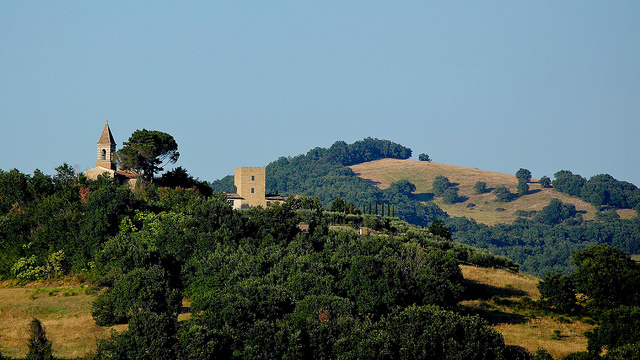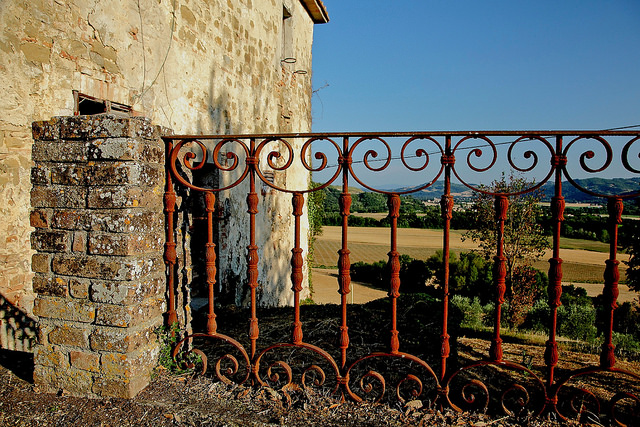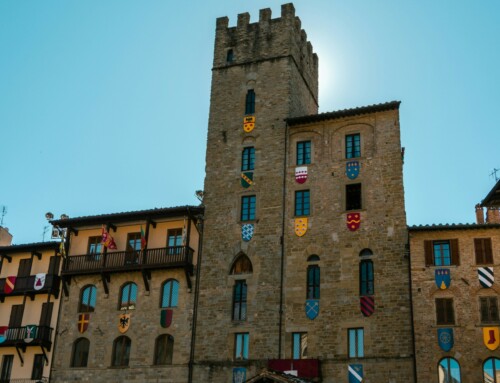What to see in Valtiberina

The Valtiberina, defined by the upper Tiber valley, enchants with its natural beauty and medieval villages. This area, between Arezzo and Perugia, is a mix of mountainous and hilly landscapes, rich in history, art and culinary traditions. Highlights include the hermitage of Camaldoli, the Sanctuary of La Verna, places associated with St. Francis, and charming villages such as Anghiari and Caprese Michelangelo. The region also offers natural parks for hiking and a variety of agritourisms for complete immersion in local culture and nature.
What To See In Valtiberina[:it]The Valtiberina is the valley of the Tiber River that follows its course from Mount Fumaiolo, where it originates, to the sea. In reality, however, only the upper valley is considered Valtiberina proper, that is, the stretch that accompanies the river from Lake Montedoglio, in the province of Arezzo, to Santa Lucia, one of the southern hamlets of the Umbrian town of Città di Castello (Perugia).

What To See In Valtiberina: Solfagnano
There are 15 municipalities in the Valtiberina, seven of which are in Tuscany, in the province of Arezzo, and eight in Umbria, in the Perugino region, and a tour in this area proves to be of great charm, both for nature lovers and for those in search of architectural beauty and characteristic villages. But what to see in the Valtiberina? Here is a brief guide.
What to expect in the Valtiberina
The river flows hilly and mountainous landscapes of great beauty, while the villages there have retained their ancient medieval charm.
Woods of holm oaks, chestnut trees, beech trees and vineyards characterize the territory of the valley: it is an almost unspoiled nature, where it is possible to devote oneself to hiking, mountain biking and horseback riding, and where one can follow routes that lead to the discovery of ancient parish churches, castles, villas and noble residences.
The Valtiberina also represents an area rich in terms of flavors: truffles, mushrooms, excellent wine and many typical specialties of the central Apennine area make a tour of the valley also a mouth-watering opportunity to discover a simple and tasty gastronomy.
Following in the footsteps of St. Francis
St. Francis traveled through the Valtiberina several times, and even today it is possible to allow people to follow in his footsteps by walking along his own paths. You can visit the hermitages where he prayed, and the most evocative place in the area is undoubtedly the Sanctuary of La Verna, which is located in the Arezzo area, a few kilometers from Chiusi.
Here Francis received the stigmata and, following this episode, the monastery and basilica arose, still visited by thousands of faithful and where a habit of Francis is preserved. The Hermitage of Montecasale, another ancient monastery among the mountains, was instead, according to legend, built by Francis himself, while the Hermitage of Cerbaiolo may not have seen the pause of the Poverello of Assisi, but certainly that of Sant’Antonio da Padova.
Then there are the Casella Hermitage, where Francis stopped on his return from La Verna, and an unmissable stop is at Montauto Castle, where he was a guest of the local lords.
Discovering Medieval and Renaissance Villages
Wondering what to see in Valtiberina, one certainly cannot overlook the many medieval villages. The entire valley is a succession of towns with ancient charm, clinging to the hills, often enclosed by walls and embellished with ancient churches and flower-lined lanes.
Anghiari, the locality where the battle between the Florentines and the Milanese took place in 1440 that Leonardo immortalized on a wall of the Salone dei Cinquecento in the Palazzo Vecchio, is a succession of narrow streets, Romanesque churches and austere noble palaces. No less rich in charm is Caprese Michelangelo, which gave birth to Buonarroti.
Everything seems to have remained as it was at the time of the great artist, and in the Palazzo del Podestà, where he was born, there is a museum dedicated to him. Still in Tuscany, one cannot fail to visit Sansepolcro, a town that is a splendid example of Renaissance architecture, and then what about Monterchi, a delightful village that stands on a hill.
There is no shortage of reminders of the past in the Umbrian Valtiberina as well: there are Città di Castello and Umbertide with many monuments churches, hermitages and works of art and the quaint village of Monte Santa Maria Tiberina.
Nature Parks
Along the course of the Tiber there are numerous protected areas offering fascinating natural environments. Trekking and mountain biking routes lead to the discovery of mysterious places such as the Alpe della Luna with its woods, the Sassi di Simone, singular rocky massifs that rise like towers to dominate Sestino and the nearby Marche region.
Then again there are the Monti Rognosi reserve, the Sovara valley, the Tiber floodplain area near Sansepolcro, and the Serpentinite area, which offers fossil-rich limestone rocks.
Staying in the Valtiberina
In addition to what to see in the Valtiberina, one should also ask oneself where to stay, and although there are numerous accommodations, from hotels to campgrounds, to “live it thoroughly” it would be advisable to choose one of the many farmhouses. Cozy and charming, they often also offer the opportunity to taste the most typical products of local gastronomy.
Photo credits:
2) Franco Vannini[:]





